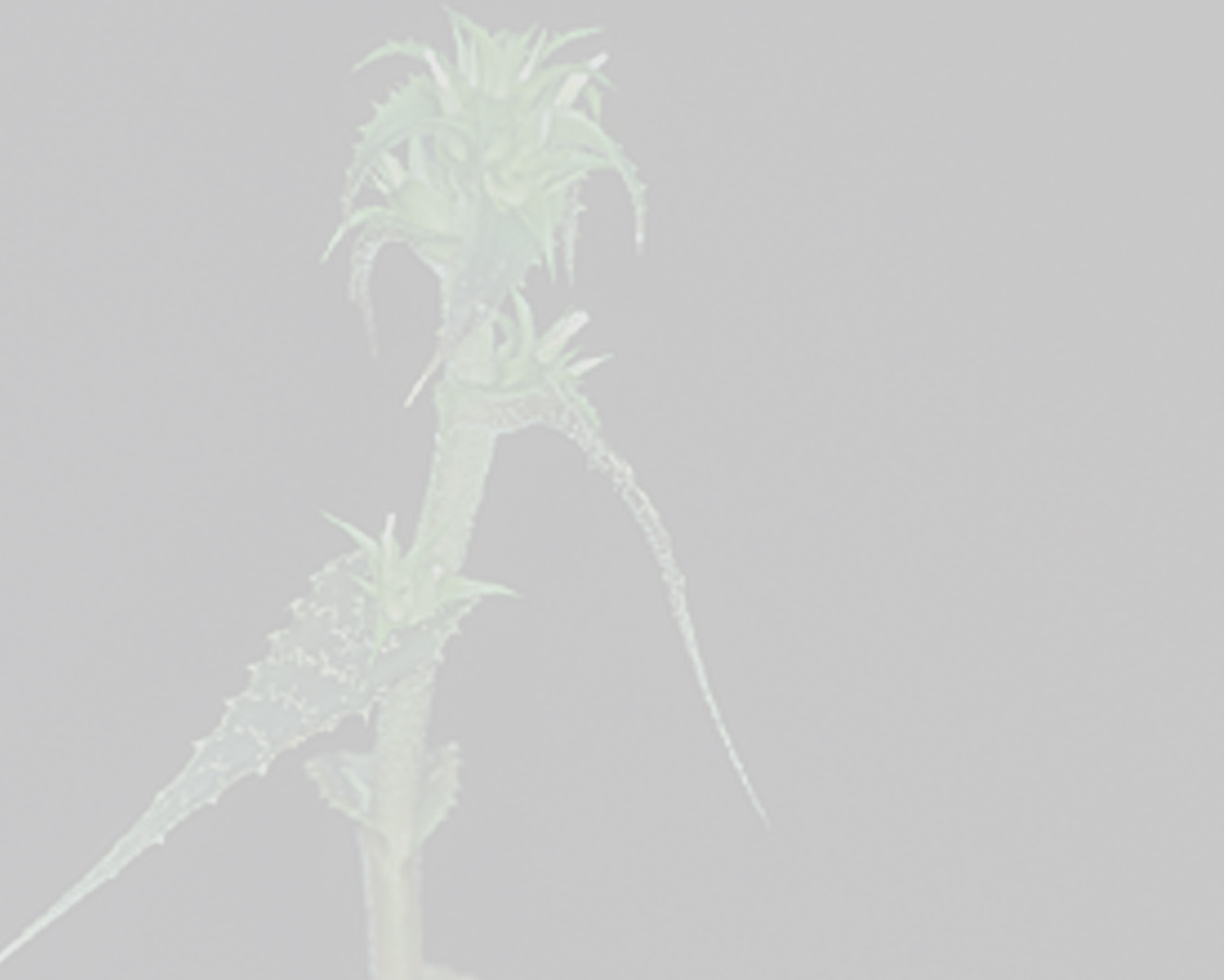


plant saxicolous, ca 7 cm high when flowering, ca 14 cm in diameter, acaulescent to shortcaulescent. leaves ca 22 in number, forming a subdense rosette; sheath suborbicular, 1.1–1.3×1.4–1.5 cm, greenish-white, glabrous, lustrous, slightly lepdote abaxially, margins serrulate on the upper third; blade sublinear, strongly canaliculate, arcuate-recurved toward the the apex, 7.7–10×0.6–0.8 cm, coriaceous, green, glabrous and lustrous, margins spinulose, the proximal ones antrorse, the distal ones retrorse, 1.4–1.5 mm long. inflorescence sessile, simple, 2.0–2.5×1.4–1.6 cm (excluding floral bracts), floral bracts foliaceous, yellowish at the bases, greenish toward the apex, distinctly exceeding the flowers. flowers ca 15 in number, 28–30 mm long, sessile, slightly perfumed; sepals triangularlanceolate, 9–10.2×2–2.3mm, greenish-yellow, hyaline, membranous along the margins, carinate, connate at the base for ca 2 mm, apex apiculate; petals spatulate, 25–26×6.5 mm, greenish-yellow, free, forming a tubular corolla at anthesis, petals inconspicuously ciliate along the apical margins, apex obtuse, bearing 2 membranous, obdeltoid appendages at the base, adnate to the petals for ca 2 mm, ca 2.3× 0.4 mm, apex truncate. stamens included, filaments linear, yellowish-white, ca 2.6 cm long, the antepetalous ones basally adnate to the petals for ca 0.8 mm, the antesepalous ones free; anther oblong, ca 2 mm long, dorsifixed near the base, base inconspicuously sagittate, apex minutely apiculate; pollen ellipsoidal, sulcate, exine reticulate to microreticulate near the opening, muri thickned, lumina polygonal. pistil: stigma conduplicate, ca 1.5 mm in diam., yellowish-white, stigmatic lobemargins densely papillose; ovary ca 3.3×2.9 mm, glabrous, greenish, placentation apical, ovules obtuse. fruits globose or nearly so, odorless, greenish, ca 6.7×6.2 mm, sepals persistent, stramineous toward the apex.Edited from (25-12-2014): Lasser & Maguire 1950. (protologue) A Report On The Plants Of The Phelps Cerro Yavi Expedition Of 1947 .